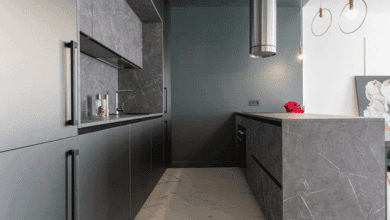How to Restore Your Home After Water Damage: A Comprehensive Guide

Water damage can wreak havoc on a home, threatening its structural integrity and fostering harmful mold growth if not addressed promptly. Homeowners face the challenging task of restoring their living space to its former condition, a process that can be overwhelming without a clear plan of action. The right approach combines expert assistance with practical homeowner strategies to tackle the aftermath of water damage effectively. Keep reading to uncover the steps necessary for a successful restoration, from identifying when professional expertise is necessary to implement do-it-yourself fixes that mitigate further issues and breathe new life into your home.
When to Call the Experts: Finding Professional Help for Water Damage Restoration
Water damage can rapidly undermine the integrity of your property. When faced with such devastation, homeowners should consider the depth of the damage. Structural safety, electrical issues, and potential mold growth are complications that demand professional attention.
Restoration experts possess specialized equipment and advanced techniques required for the comprehensive rehabilitation of water-damaged spaces. Their skills extend beyond simple drying to include repairing or reconstructing areas where water has compromised.
Engaging with professionals ensures adherence to local building codes and insurance requirements during the restoration process. Such compliance is paramount for the long-term safety and valuation of your property.
For significant water damage, the assistance of a company like Premier Restorations becomes indispensable. Their expertise in restoration services ensures that every aspect of damage control and repair is managed effectively, safeguarding the home against future issues.
Revamping Your Space: Tips for Redecoration After Water Damage
Restoring a home after water damage is an intricate process that demands careful planning and strategic execution. Homeowners must assess the destruction and dry out the affected areas before any redecoration begins. This initial step mitigates the risks of mold and structural damage, ensuring a safe environment for reinvention.
Once a home is thoroughly dried and any necessary repairs are completed, selecting materials that resist future water damage is paramount. Materials such as porcelain tile for flooring or water-resistant paint for walls offer durability along with aesthetic appeal, providing a harmonious combination of functionality and style for any space.
Selecting appropriate decor to reinvent a water-damaged space involves considerations of both beauty and practicality. Incorporating elements like a fake plant can add a touch of greenery to the home’s decor, offering a low-maintenance decorative option that avoids the risk of additional moisture.
Lighting plays a pivotal role in transforming a space post water damage. Strategic placement of LED lights or installing skylights can brighten rooms, create the illusion of spaciousness, and showcase the redecoration efforts, ultimately bringing forth a renewed sense of home.
DIY Solutions: What You Can Do to Restore Your Home on Your Own
Homeowners grappling with minor water damage may tackle certain aspects of restoration themselves. Initiating the cleanup as promptly as possible minimizes the extent of the damage. Quick removal of water using wet-dry vacuums or pumps, followed by thorough drying with fans and dehumidifiers, can set the stage for further repairs.
Salvaging possessions becomes a priority once the area is dry. Homeowners can clean and disinfect salvageable items, assessing what can be restored or will require replacement. Attention to detail during this phase prevents the loss of irreplaceable personal effects and mitigates the cost of replacing household items.
Assessment of minor structural and cosmetic damages to walls, flooring, and furnishings should follow. Homeowners with the aptitude for DIY can repair or repaint surfaces, ensuring they utilize water-resistant products to fortify their homes against future water damage incidents.
Lastly, homeowners should inspect and address potential sources of water intrusion, such as leaky windows or insufficiently sealed doors. Replacing old weather stripping and applying caulking where needed seals out moisture, an action critical for negating the recurrence of water damage within the home.
Overall, restoring a home after water damage requires a balanced approach that combines professional expertise with strategic homeowner involvement. By addressing immediate concerns, making informed decisions about repairs and decor, and taking preventative measures, homeowners can effectively restore their living spaces and protect them against future damage.


